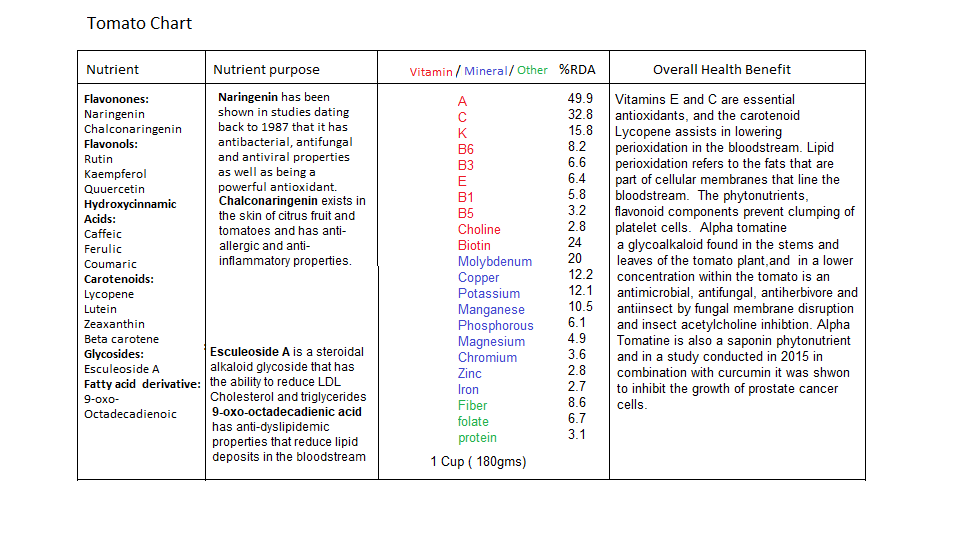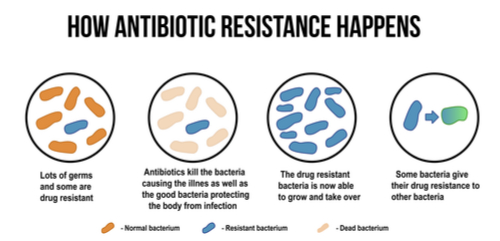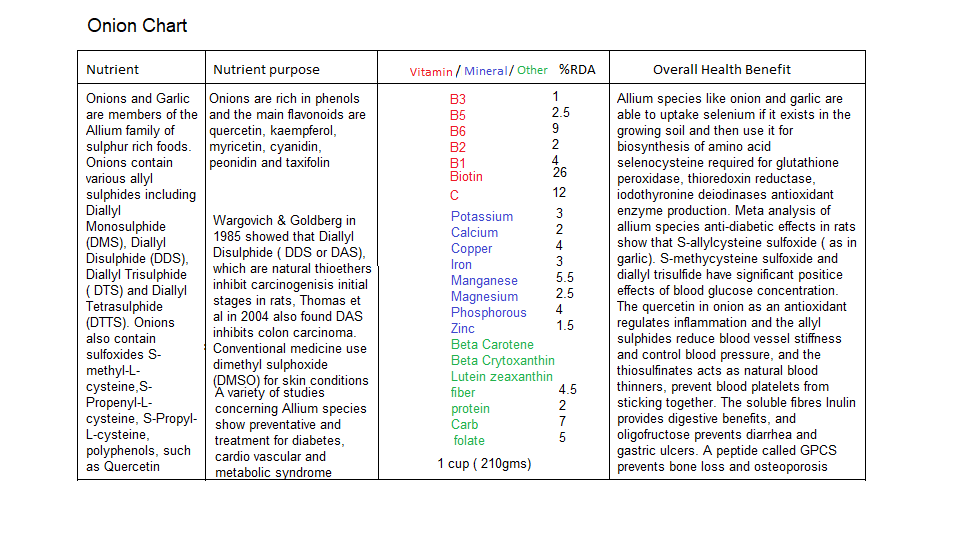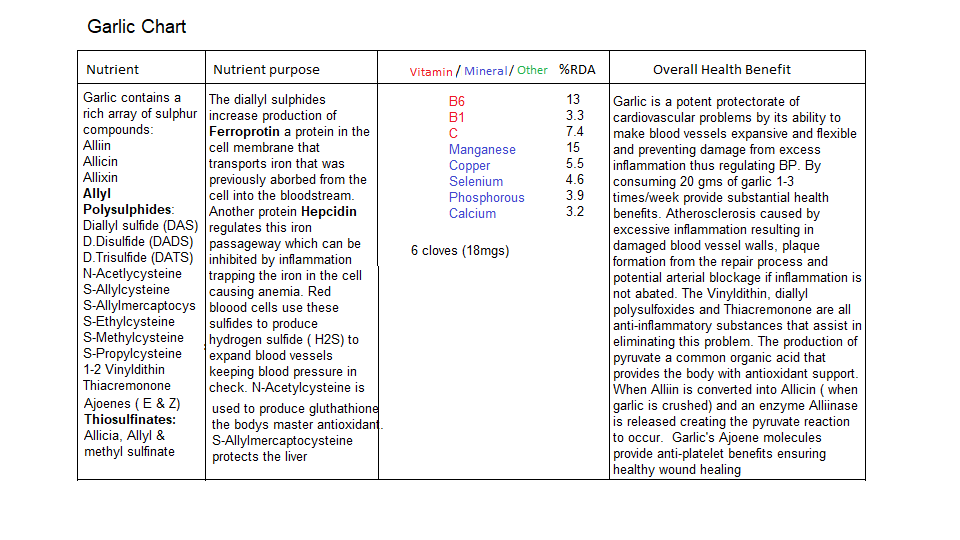Featured foods : Tomato, Onion, Garlic
Introduction
Phenolic Acids
Phenolic acids exist as Hydroxybenzoic and Hydroxycinnamic acids which are both naturally synthesised phenolic compounds produced by plants. Due to a unique symbiotic relationship between soil bacteria and plants, phenolic acid in plants are actually derived from bacteria. Hydroxycinnamic acid derivatives tend to be more common as we can see in celery and in tomatoes as shown in the chart below:

One of the key reasons that phenolic acids exist in plants is to establish a defense mechanism against bacteria and insects. Plants, like human microbiota must exist with both beneficial and pathogenic bacteria, viruses and fungi, for example, beneficial bacteria for a plant is rhizobia* that sets up a symbiotic relationship with legumes. The plant resistance induced by these acids is afforded by acid release from plant seeds, roots and residue composition that work against soil borne pathogens and root feeding insects. A complex set of phenolic compounds, some of which are organic isoflavonoids include Cajanin , Medicarpin (assists in bone healing as shown in a study in 2015), Glyceollin, and Rotenone. Rotenone is a Chemical that is produced naturally by plants that reside in the roots and seeds, and is used as a pesticide and kills fish by inhibiting cellular respiration in the mitochondria, and it is also toxic to humans. Coumestrol is a phytoestrogen and used in HRT therapy. The largest plant concentration is in red clover (1322 mg/100g) and considered an antiherbivore, since it can inhibit fertility in the animal. Brussels sprouts contain coumestrol and like all cruciferous vegetables such as cauliflower etc, can become an estrogen agonist if eaten in excess. Phaseolin is a major seed storage protein referring to the accumulation of protein during seed development, such as in French beans, that make up a good part of the protein content in red kidney beans, and other Isoflavonoid. Flavonoids that act as Phytoalexins, which are antibiotic substances or inducible antimicrobials produced by plants in response to environmental stress caused by invading organisms, where even pesticides can cause stress on the plant. Invading fungi on potatoes, carrots, beets, green beans will elicit this response, and soybeans infected by fungus will produce glyceollin which can be toxic to animals. Phytoanticipins are chemical barriers against microbial attacks and Nematicides that fight soil borne pathogens and phytophagous insects. As mentioned in the tomato chart, alpha tomatine is a key saponin which are glycosylated phytoanticipins that acts as an antifungal, antimicrobial, antiherbivore and antinsect plant defense substance.
*Rhizobia is a strain of proteobacteria soil bacteria that provides a nitrogen supply to legume plants by bacterial conversion of nitrogen fixing bacteroids and in return the bacteria receive a photosynthate ( a sugar produced by photosynthesis) as a food source and this is accomplished by the release of flavonoid signalling molecules secreted by the root of the nitrogen starved plant. These signalling molecules also act as chemoattractants.
I did it my way

As you might be aware, the antibiotic arsenal used by conventional medicine has all but expired in terms of its effectiveness to kill pathogenic bacteria. The original chemical scaffolding that antibiotics were built on, is at the point of collapse, and few innovations have been made to shore up antibiotic usefulness, so in recent years there is, and has been, a mad scramble to find alternatives. The obvious direction is natural substances so research has been going on since 2009 and possibly earlier toward synthetic drug production using natures antibacterial plant defense systems which include phenolic acids, polyphenols, flavonoids and Terpenoids. Furthermore bacteriophage ( using viruses to kill pathogenic bacteria) methods alone, and the combination of both bacteriophage and plant derived extract together have been researched. The irony of course is that the early part of the 20th century (pre-antibiotic poison), only natural plants were used to fight pathogenic infection. Currently 33% of of total drugs produced use over 20,000 species of medicinal plants that are awash with antimicrobial properties and these phytochemicals include tannins, alkaloids, carbohydrates, glycosides, terpenoids, steroids, flavonoids and coumarins, So the burning question is why not just use the plants and herbs in their natural form instead of trying to manufacture synthetic hybrids??…because that would be too easy and of course the grass outside is non patentable..the arrogance of man..we are above nature and we will do it our way.
Modern science, driven by pharmacological purpose, acknowledge the fact that plant based antimicrobials (PBA) are weak and non specific, which is a viable observation by taking these substances away from the natural environment. Although, it is known that plants produce these defensive products in high concentrations, and studies show PBA’s are useful against many pathogens, but even by 2017 these plant compounds remain underrepresented as clinical antibiotic therapies..why?…because they are natures design not meant for man’s hybrid design. Ancient natural medicines Chinese and Indian (Ayurveda) use many herbs and plant compounds as medicines providing effective antimicrobial properties but they are used, as found, in nature, not ‘bastardized’ into some ineffective hybrid pharmacological/natural concoction.
Sulphur Sulphides/Sulfoxides


Sulphur and Plants
Plants uptake sulphur from the soil ( if the soil contains sulphur) by absorbing sulfate from the soil or sulfur dioxide (SO2) from the air. Sulphur deficiency which is visually apparent, and similar to nitrogen deficiency, form yellow leaves and suffer from growth retardation, resulting in low crop yields, low crop quality and nutritional value. Sulphur is essential for plants in order to manufacture proteins from sulphur amino acids such as cysteine and methionine. Coenzymes such as thiamine, biotin, Coenzyme A and Ferredoxin ( a nonheme iron protein involved in photosynthesis and electron transfer for energy) also contain a sulphur component. Plant metabolism relies on the macronutrient sulphur which enters the metabolic cycle as a sulfate ion and transporters necessary for root uptake and distribution to plant subcellular compartments. The metabolic process binds sulfide to amino acid cysteine a precursor component of glutathione. Plants have the ability to assimilate sulfate while animals and humans must take in amino acids cysteine and methionine as part of their diet, although conversion of methionine to cysteine is possible. Plants use sulphur as protection against pests and disease such as fungal pathogens So, sufficient sulphur in the soil is imperative for humans to obtain enough sulphur when consuming plants like cruciferous vegetables ( cauliflower etc), garlic and onions.
Sulphur and the human body
Reading from the charts below you can read that allium plant species Onion and Garlic contain an array of sulphur compounds providing sulphur amino acids Cysteine and Methionine both precursor products for the production of the body’s master antioxidant Glutathione and for the cellular energy cycle. Both onion and garlic contain sulphides and sulfoxides providing blood glucose regulation, natural blood thinning and assist in preventing atheriosclerotic material building up within the arteries, anti-inflammatory, anti-microbial, anti-clotting, and increased iron absorption. Ajoene in garlic apart from being an anti-clotting agent, is an anti-viral, anti-fungal, anti-bacterial compound, and anti-carcinogenic where it was shown to induce apoptosis in basal cell carcinoma using a biological technique referred to as Quorum sensing.


Quorum sensing (QS)
This technique provides the ability to sense and respond to cell population density by gene regulation. Quorum sensing has been largely studied in bacteria where they secrete a signalling molecule called an autoinducer which detect changes in concentrations of QS released by individual bacterial species and if low it simply diffuses, but if the QS is at a high cell density and exceeds predetermined threshold levels it will trigger changes in gene expression. Some opportunistic pathogens such as Pseudomonas Aeruginosa which infect people in a health care setting ( like from dirty equipment in hospitals ) who have weakened immune systems ( I wonder how that was induced??) and can be deadly infecting the blood and/or cause pneumonia. From our discussions in the articles on the Microbiome we established that opportunistic bacterial colonies can be beneficial if kept in check by the beneficial flora, but can become pathogenic if the gut is imbalanced thus compromising the immune system.
Pseudomonas Aeruginosa
Pseudomonas Aeruginosa uses QS to regulate and coordinate the formation of a biofilm ( this is a protective casing that engulfs the bacterial colonies), swarming motility ( rapid increase of bacterial colony 2-10 micrometres/s), Extracellular polymeric substance ( natural polymers or exopolysaccharide secreted by microorganisms into their environment to establish the functional and structural integrity of biofilms), virulence and cell aggregation. Once they reach a threshold level and they are under the control of the beneficial bacteria their bacterial colony expansion stops. However, if they are allowed to go beyond this threshold, they become aggressive and can soon overcome the host’s immune system, form a biofilm to protect themselves and disease ensues ( remember my comment in a previous article it only takes 5 days for a bacterial organism to build a colony that can engulf the host). The news for conventional medicine is, this aggressive pathogen, with its protective biofilm, resists all antibiotics, but garlic can block the QS mechanism of the pathogen and stop it in its tracks as does beneficial bacteria within the gut.
Oxidative Stress
Oxidative stress describes a chronic development of stress caused by environmental triggers such as cold, physical activity, ageing, nutrient deficiency, burns, psychological stress, trauma, long term sickness, toxicity or any other abnormal condition creating an imbalance within the organism. These situations can cause leaching of vital nutrients coupled with a possible nutrient deficient status to start with. The central and local stress limiting systems such as the antioxidant defense system involved at the cellular level and systemic levels are under stress themselves if nutrients are missing. The ORAC value * for every human being must be at least at a level of 100,000, and if not, and is potentially much less, than the body is vulnerable to oxidative stress since the required antioxidants from the diet is dangerously low
*ORAC (Oxygen Radical Absorbance Capacity) is a system of measurement for antioxidant capacity of dietary foods, although in 2012 this system was withdrawn citing no correlation between test results and biological activity could be determined. This is understandable since foods that should have a particular ORAC value, indeed may not, due to the questionable agricultural standards and soil depletion, but it at least gives a rough marker that includes not only vitamin/mineral content but phenols as well, but as we stated earlier, absorption of phenolic compounds is poor. For example in the old USDA ORAC chart 1 cup of wild blueberries had an ORAC value of 13,427, 1 cup of raw blackberries = 7,701, 1 granny smith apple = 5,381, 100 grams of pomegranate seeds = 2,860. Other systems exist but not universally embraced as a standard include TEAC ( Trolox Equivalent Antioxidant Capacity).
Radical oxygen species(ROS) or Free radicals
Since life can only exist with oxygen, the many biological processes within the human body utilize oxygen such as energy production within all cells and the by products produced are Radical Oxygen Species (ROS) or free radicals that can cause tissue damage all over the body. Even our own immune system create free radicals to fight pathogenic invaders, and our cellular mitochondria can use ROS to signal the cell to produce more mitochondria to serve the demand from the host. DNA bases are also susceptible to ROS oxidation, especially 8-hydroxy-2-deoxyguanosine which is the oxidised version of deoxyguanosine composed of purine nucleobase guanine that are part of the building blocks of DNA. These oxidised DNA components are rapidly repaired by base excision repair throughout the cell cycle before mutation occurs. Oxidative stress puts these systems at risk of failure. The consummation of processed and fast foods and excessive intake of animal protein, nitrites in cured meats and overcooking of meats can also put a burgeoning stress on the individual. Vegetable oils that are essentially dead fat can raise the level of chylomicrons (cholesterol carrying lipid transports) in the intestine which generate free fatty acids that are taken up by the liver and are either deposited into the mitochondria of the hepatic cells for beta oxidation and entered in the energy production cycle or esterified into triglycerides. The chylomicron lipid rafts once they enter the bloodstream, various tissues can capture them and use the triglyceride fats as a source of energy. Oxidative stress and physiological imbalance can create an excessive amount of chylomicrons where the cholesterol can potentially become oxidised ( oxidised LDL particles) and cause trouble. Furthermore, if free radicals are allowed to simply roam the body they will cause cellular membrane damage because they will steal electrons from the lipids in the membrane; this negative activity is called lipid peroxidation.
Nuclear Factor Erythroid Factor 2 (Nrf2)
Nrf2 is a major transcription factor that should become activated under oxidative stress conditions but for various reasons including ageing especially if that person is nutrient deficient, this transcription factor can become dysfunctional. The purpose of Nrf2, which is a mediated antioxidant response pathway, is to maintain cellular reduction-oxidation or Redox ( to quench oxidants and then reduce the antioxidant back to its reduced state after being oxidised itself) homeostasis. This is achieved by the transactivation of an array of cytoprotective genes that regulate antioxidant defense and metabolism. There are some 200 genes that are expressed including GSTA1 that expresses protein Glutathione S-transferase A1 that detoxifies and metabolizes electrophilic ( attracts electrons) compounds, GPX that expresses Glutathione peroxidase that detoxifies hydrogen peroxide for antioxidant purposes etc. In addition it triggers the expression of genes to regulate inflammation including ILIB that regulates immune and inflammatory response to infections, TNFA that expresses protein Tumor necrosis factor alpha responsible for signalling between cells leading to necrosis or apoptosis etc. Since Nrf2 activates inside the cell nucleus it also protects mitochondria from dysfunction and promotes mitochondrial biogenesis.
Protection from overcooking
It is recognised in some scientific circles that some food like the allyl sulfides in garlic and sulforaphane in broccoli, and even isoliquiritigenin in licorice induce the Nrf2/ARE (Antioxidant Response Element) pathway. Garlic compound Diallyl sulphide (DAS) is also involved in preventing Heterocyclic amines (HCA) such as PhIP ( 2-amino-1-methyl-6-phenylimidazo pyridine) that form on meat when cooked at high temperatures (400 F/204 C).
Conclusions
We have only touched the surface on the subject of sulfur, since it not only is an essential nutrient but a vital one. It is the fourth most common anion in the body -ve charged molecule and interestingly its electron state can vary from -2 to +6 making it very versatile in terms of giving and taking electrons. The body can make sulfate from combining 4 oxygen molecules and a sulphur molecule and it can transport oxygen all over the body including the bloodstream lining the walls of the blood vessels, arteries etc providing blood to flow smoothly. It assists in energy production for the mitochondria and garbage disposal from the lysosomes. Sulphur allows the red blood cells to protect themselves from glycated damage from glucose in the blood such as in diabetes when the haemoglobin in the red blood cells becomes damaged from excess glucose in the blood. Sulphate in the red blood cell membranes builds a water shield from the onslaught of glucose, and oxygen both of which are essential to the blood but equally damaging under particular circumstances such as diabetes. When the skin is exposed to sunlight the skin manufactures a sulphated (7-Dehydrocholesterol) cholesterol precursor form of VitD3 from UVB sunlight that has a wavelength of 280-320 nanometres which is the only wavelength that produces sulphated Vit D3.
“Shallots are for babies; onions are for men; garlic is for heroes.” – Unknown.
“Since garlic then hath powers to save from death, bear with it though it makes unsavory breath.” – Salerno Regimen of Health.
Check out other Articles in this series:
Nutrients in Food and their bodily purpose I (Phenols)
Nutrients in Food and their bodily purpose II (Lignans, Triterpenes, Phytosterols, Carotenoids & Fats)
Nutrients in Food and their bodily purpose IV (Glucosinolates, Sulforaphane, Indole-3-Carbinol)
Nutrients in Food and their bodily purpose V (Lipid distribution, absorbed fats, Criciferous Veg)
Nutrients in Food and their bodily purpose VI (Nutrients required for Liver Detox)
Nutrients in Food and their bodily purpose VII (Seeds & the Omega Fatty Acids)
Nutrients in Food and their bodily purpose VIII (Nutrients required for cellular energy production)
Nutrients in Food and their bodily purpose IX (Water I Properties and Body fluids)
Nutrients in Food and their bodily purpose X (Water II Cellular Hydration)
Nutrients in Food and their bodily purpose XI (Water III Fluid filtration, reabsorption, excretion)
Nutrients in Food and their bodily purpose XII (Water IV Blood pressure, Blood volume regulation)
Nutrients in Food and their bodily purpose XIII (Water V Body Fluid Dysfunction
Nutrients in Food and their bodily purpose XIV (Dental Nutrients)
Nutrients in Food and their bodily purpose XV (Nutrients involved in Methylation I)
Nutrients in Food and their bodily purpose XVI (Nutrients involved in Methylation II)
Nutrients in Food and their bodily purpose XVII (Nutrients involved in Methylation III)
Nutrients in Food and their bodily purpose XVIII (Nutrients involved in Methylation IV)
Nutrients in Food and their bodily purpose XIX (Methylation V and the Microbiota I)
Nutrients in Food and their bodily purpose XX (Methylation VI and the Microbiota II)
Nutrients in Food and their bodily purpose XXI (Superfoods: Wheatgrass)
Nutrients in Food and their bodily purpose XXII (Superfoods: Adaptogens)
Nutrients in Food and their bodily purpose XXIII (A look into our nutritional past Sir Robert McCarrison)
Nutrients in Food and their bodily purpose XXIV (Pregnancy: Nature vs Nurture vs Nutrition)
References/Acknowledgments :
- Thioether, TEAC ( Trolox Equivalent Antioxidant Capacity), ORAC, Wikipedia
- Nitrogen fixing Rhizobium-legume symbiosis: are polyploidy and host peptide governed symbiont 2014 Frontiers in Biology Gergely Maroti & Eva Kondorosi
- Developing new antimicrobial therapies:Are synergistic combinations of plant extracts/compounds with conventional antibiotics the solution? Matthew Cheesman et al 2017 NCBI
- Plant antimicrobial agents and their effects on plant and human pathogens Rocio Gonzalez Lamothe et al 2009 NCBI
- Rotenone the fish killer DK Sackett 2012 The fisheries blog
- Medicarpin, a natural Pterocarpan, heals cortical bone defect by activation of notch and Wnt canonical signaling pathways 2015 Manash Dixit et al PLOS one
- Alliinase Science Direct
- Epigenetics Joel Wallach, Ma Lan and Gerhard Schrauzer book 2014
- Diallyl sulphide a naturally occuring thioether that inhibits carcinogen induced nuclear damage to colon epithelial cells in vivo Wargovich & Goldberg 1985 Sciencedirect
- Medical use of Diallyl sulphide (DMSO) 1985 Swanson NCBI
- 31 surprising benefits of onions for skin, hair & health, 2018 Ravi Teja Tadimalla Stylecraze
- Sulphur: a missing link between soils,crops and nutrition Book Joseph jez ( editor) 2008
- CDC Health care associated infections Pseudomonas aeruginosa CDC
- Vitamins and oxidative stress Vopr Pitan 2013 NCBI
- Nutrients and oxidative stress: Friend or Foe ? Bee Ling Tan et al 2018 Oxidative Medicine and cellular Longevity Hindawi
- Nuclear Factor Erythroid Factor 2 in Ageing and Lung Fibrosis Shobha M Swamy et al 2016 NCBI
- Modulation of mitochondrial dysfunction in neurodegenerative diseases via activation of nuclear erythroid factor 2 by food derived compounds Isabel Daenzer at al 2015 Science direct
- (SAMA) Sulfate: the most common nutritional deficiency that you never heard of Youtube interview Stephanie Seneff interview 2017
- Famous garlic quotes mmm,garlic
Author : Eric Malouin